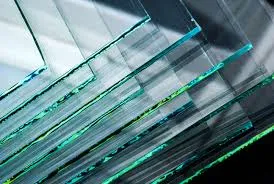The Allure of Ribbed Glass A Timeless Element of Design
Ribbed glass, with its distinctive texture and timeless appeal, has been a staple in architectural and decorative design for centuries. Characterized by its parallel ridges or grooves, ribbed glass not only serves a functional purpose but also adds an aesthetic charm to various spaces. As a versatile material, ribbed glass can be found in windows, doors, lighting fixtures, and decorative objects, making it an integral part of both historical and contemporary design narratives.
One of the primary advantages of ribbed glass is its ability to diffuse light. The ridged texture helps to scatter and soften incoming sunlight, creating a warm and inviting ambiance while maintaining a level of privacy. This feature makes ribbed glass an excellent choice for bathrooms, entryways, and other areas where both light and privacy are desired. Moreover, the refracted light that passes through ribbed glass can produce beautiful patterns and reflections, enhancing the visual dynamics of any space.
Historically, ribbed glass gained prominence in the 19th century, particularly during the Industrial Revolution when glass production techniques evolved
. The material was used extensively in factories and commercial buildings, where large expanses of glass were needed to illuminate workspaces. Its durability and ability to withstand the rigors of industrial environments made it a practical choice. However, ribbed glass also found its place in homes, as architects and designers recognized its aesthetic potential.
ribbed glass
In modern design, ribbed glass continues to be celebrated for its versatility. It has become increasingly popular in contemporary architecture, where it is often used in conjunction with minimalist and mid-century design styles. Ribbed glass partitions can create separation in open floor plans without sacrificing light and openness, while ribbed glass doors and windows can add a tactile quality that enhances the overall design narrative of a space.
In addition to its architectural uses, ribbed glass has also made a significant impact in the realm of decor. From vases and lighting fixtures to tableware, ribbed glass objects are sought after for their unique texture and elegance. Designers often incorporate ribbed glass in their collections to evoke a sense of nostalgia while still appealing to modern sensibilities.
Furthermore, ribbed glass aligns with the growing trend of sustainable and eco-friendly design. The material can be made from recycled glass, and its durability means it often has a long lifespan, reducing the need for frequent replacements. As sustainability becomes a focal point in design, ribbed glass represents a perfect blend of aesthetics and environmental consciousness.
In conclusion, ribbed glass is much more than just a building material; it is a timeless element that embodies both form and function. Its ability to diffuse light, enhance privacy, and add visual interest makes it a favored choice among architects and designers alike. Whether used in contemporary homes, rustic interiors, or sleek commercial spaces, ribbed glass remains a symbol of elegance and practicality, proving that great design transcends trends and time. As we continue to explore new ways to incorporate this beautiful material into our lives, ribbed glass will undoubtedly remain an enduring feature of the design landscape.
 Afrikaans
Afrikaans  Albanian
Albanian  Amharic
Amharic  Arabic
Arabic  Armenian
Armenian  Azerbaijani
Azerbaijani  Basque
Basque  Belarusian
Belarusian  Bengali
Bengali  Bosnian
Bosnian  Bulgarian
Bulgarian  Catalan
Catalan  Cebuano
Cebuano  Corsican
Corsican  Croatian
Croatian  Czech
Czech  Danish
Danish  Dutch
Dutch  English
English  Esperanto
Esperanto  Estonian
Estonian  Finnish
Finnish  French
French  Frisian
Frisian  Galician
Galician  Georgian
Georgian  German
German  Greek
Greek  Gujarati
Gujarati  Haitian Creole
Haitian Creole  hausa
hausa  hawaiian
hawaiian  Hebrew
Hebrew  Hindi
Hindi  Miao
Miao  Hungarian
Hungarian  Icelandic
Icelandic  igbo
igbo  Indonesian
Indonesian  irish
irish  Italian
Italian  Japanese
Japanese  Javanese
Javanese  Kannada
Kannada  kazakh
kazakh  Khmer
Khmer  Rwandese
Rwandese  Korean
Korean  Kurdish
Kurdish  Kyrgyz
Kyrgyz  Lao
Lao  Latin
Latin  Latvian
Latvian  Lithuanian
Lithuanian  Luxembourgish
Luxembourgish  Macedonian
Macedonian  Malgashi
Malgashi  Malay
Malay  Malayalam
Malayalam  Maltese
Maltese  Maori
Maori  Marathi
Marathi  Mongolian
Mongolian  Myanmar
Myanmar  Nepali
Nepali  Norwegian
Norwegian  Norwegian
Norwegian  Occitan
Occitan  Pashto
Pashto  Persian
Persian  Polish
Polish  Portuguese
Portuguese  Punjabi
Punjabi  Romanian
Romanian  Russian
Russian  Samoan
Samoan  Scottish Gaelic
Scottish Gaelic  Serbian
Serbian  Sesotho
Sesotho  Shona
Shona  Sindhi
Sindhi  Sinhala
Sinhala  Slovak
Slovak  Slovenian
Slovenian  Somali
Somali  Spanish
Spanish  Sundanese
Sundanese  Swahili
Swahili  Swedish
Swedish  Tagalog
Tagalog  Tajik
Tajik  Tamil
Tamil  Tatar
Tatar  Telugu
Telugu  Thai
Thai  Turkish
Turkish  Turkmen
Turkmen  Ukrainian
Ukrainian  Urdu
Urdu  Uighur
Uighur  Uzbek
Uzbek  Vietnamese
Vietnamese  Welsh
Welsh  Bantu
Bantu  Yiddish
Yiddish  Yoruba
Yoruba  Zulu
Zulu 

